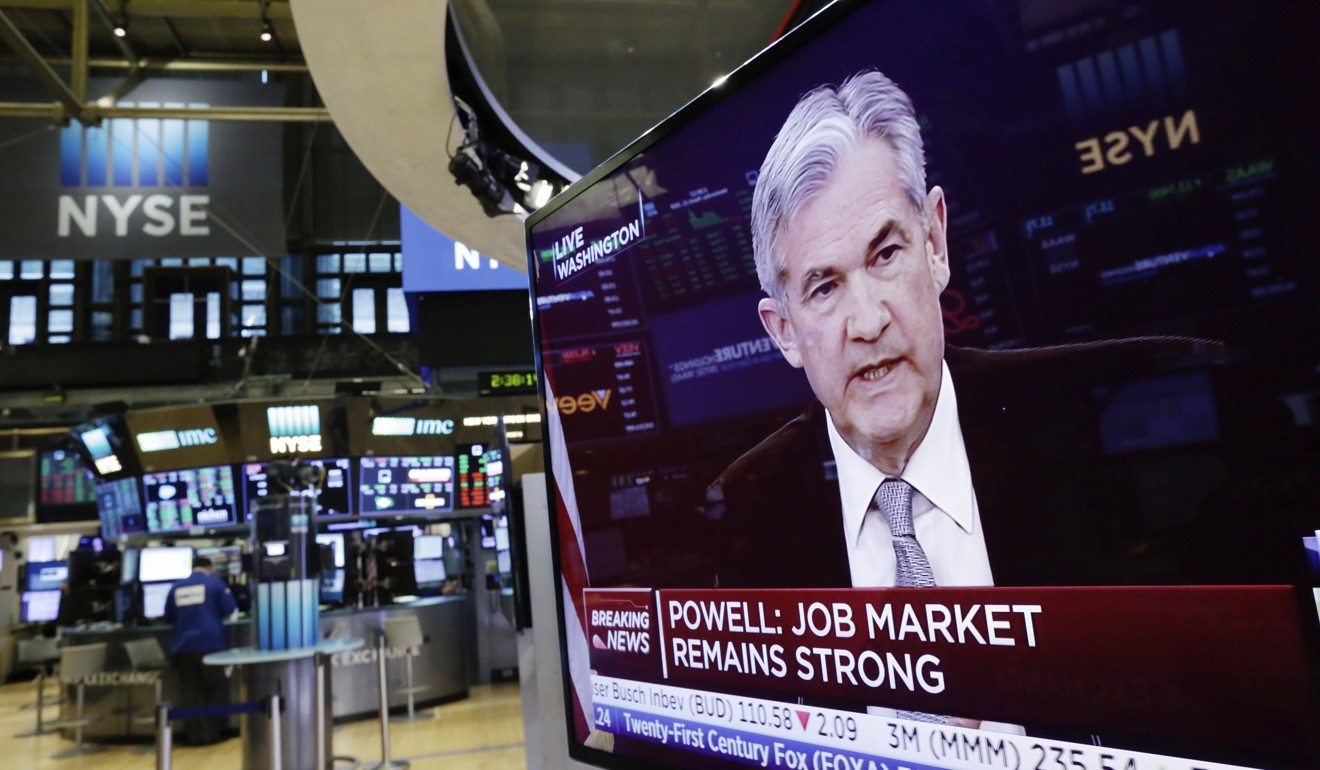
Volatile markets? Don’t hit the panic button just yet, although pockets of concern persist
Nicholas Spiro says some volatility is good for financial markets and the current bumpy ride should not cause alarm, although caution in certain areas, such as the euro zone, would be warranted

Last year, barely a day went by without a warning of the risks posed by the staggering tranquillity in financial markets.
According to data from Bloomberg, daily movements in the benchmark S&P 500 equity index in 2017 were the lowest in more than half a century. In July 2017, the VIX Index, Wall Street’s “fear gauge” which uses options-trading data to measure the implied volatility of stocks in the S&P 500, fell to its lowest level ever in intraday trading and remained subdued for the rest of the year. In the debt markets, meanwhile, the yield on 10-year US Treasury bonds traded in its narrowest range since 1965.
The fear at the start of this year was that ultra-low volatility was breeding complacency, causing asset prices to rise to unsustainably high levels and increasing the scope for a sharp and disorderly sell-off – especially in view of the withdrawal of monetary stimulus led by the US Federal Reserve. A correction, many market participants believed, was necessary to remove some of the froth and place valuations on a more secure footing.

Fast forward three months, and the calm that characterised markets last year has been well and truly shattered.
Part of the problem is that not enough turbulence can be as bad as too much. Somnolent markets, which engender excessive risk-taking, also depress banks’ earnings
Since the beginning of this year, there have already been nearly 30 days in which the S&P 500 has moved more than 1 per cent in either direction, four times the total for the whole of 2017, according to Bloomberg. The 10-year Treasury yield, meanwhile, has shot up nearly 40 basis points, and in mid-February was close to surpassing the psychologically important 3 per cent level.
Add in escalating trade tensions between the US and China, mounting strains on popular technology stocks and, most recently, a resurgence in geopolitical risks which has caused Russia’s currency to plunge 9 per cent against the US dollar so far this month, and it is not surprising that some investors fear the pendulum of volatility is swinging too far the other way.
Part of the problem is that not enough turbulence can be as bad as too much. Somnolent markets, which engender excessive risk-taking, also depress banks’ earnings by depriving brokers of lucrative trading fees. Conversely, wild gyrations in asset prices can be even more damaging, undermining confidence and potentially causing a severe sell-off – especially when investors have grown accustomed to low volatility and, as February’s “mini-crash” revealed, have bet heavily on the calm persisting.
At present, there are no indications that the recent surge in volatility is getting out of hand, hitting all asset classes indiscriminately and increasing the risk of a systemic shock.
The turbulence is mainly confined to US stock markets. Bonds, whose performance is the true measure of sentiment, have proved remarkably stable. Perhaps the best example of this is emerging market corporate debt which has become a focal point of concern because of stretched valuations. According to data from JPMorgan, the average spread, or risk premium, on junk-rated corporate bonds in developing economies has even narrowed slightly since the start of this year and has risen just 5 basis points over the past month.
With the volatility genie having been let out of the bottle, markets are becoming more sensitive to risks and vulnerabilities in the global economy
In a sign of the extent to which investors’ risk appetite remains undimmed, Saudi Arabia, which spooked investors last year when high-profile princes and billionaires were arrested in a corruption probe, raised US$11 billion on Tuesday in the largest dollar-denominated debt sale by an emerging market this year, attracting a whopping US$50 billion in bids.
Still, with the volatility genie having been let out of the bottle, markets are becoming more sensitive to risks and vulnerabilities in the global economy.
The most important one right now is an incipient growth scare centred around the euro zone. The Economic Surprise Index for Europe, a gauge developed by Citigroup which measures how often data exceeds or falls short of expectations, has plummeted this year as euro zone services and manufacturing activity have weakened. With the export-dependent economy of Germany – whose equity market plunged 13 per cent between the end of January and late March – acutely vulnerable to trade protectionism, growing turbulence in European assets could prove dangerous, not least given the European Central Bank’s plans to wind down its programme of quantitative easing later this year.

A higher volatility environment, although a welcome return to more normal trading conditions, raises the stakes for markets and the global economy.
The good news is that growth, particularly in the US, still remains robust, buoying corporate earnings. The bad news is that investors’ expectations for growth have fallen to their lowest level in nearly two years, according to a fund manager survey by Bank of America Merrill Lynch.
The combination of renewed volatility and worries about growth is a dangerous one.
Nicholas Spiro is a partner at Lauressa Advisory